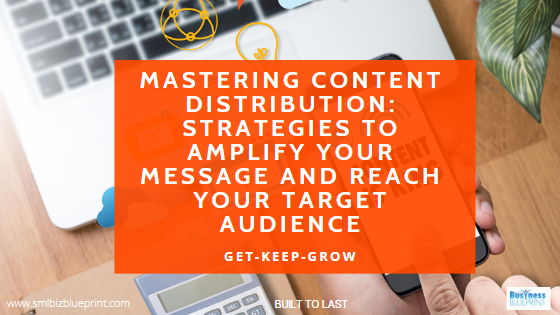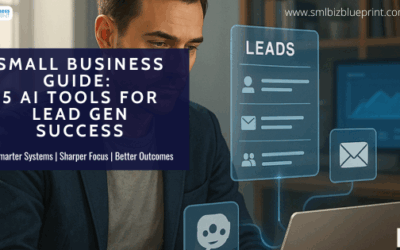Welcome to the world of content distribution, where the power of your message meets the art of reaching your desired audience.
As a business owner or marketer, you understand the importance of creating compelling content, but your message can easily get lost in digital noise without effective distribution.
This comprehensive guide will delve into the strategies that can help you master content distribution, amplify your message, and connect with your target audience.

From leveraging social media to optimising SEO, collaborating with influencers, and beyond, we’ll explore actionable tactics that can elevate your content distribution game.
#1 Social Media Sensation – Unleash the Power of Platforms
When it comes to content distribution, social media platforms are a force to be reckoned with.
They offer a vast landscape for engaging your target audience, building brand awareness, and driving traffic to your website.
Here are some strategies to leverage the power of social media for effective content distribution:
Craft Engaging and Shareable Content:
Whether it’s a captivating video, an attention-grabbing infographic, or a thought-provoking blog post, create content that resonates with your target audience.
Spark their curiosity, evoke emotions, and provide value that they can’t resist sharing.
Know Your Platforms:
Each social media platform has its unique characteristics and audience.
Tailor your content distribution strategy to match the platform’s tone, format, and user behaviour.
Use visuals on Instagram, engage in conversations on Twitter, and showcase your expertise on LinkedIn.
Embrace Social Advertising:
To reach a wider audience, consider investing in social media advertising.
Utilise targeting options to narrow down your audience based on demographics, interests, and behaviours.
This ensures that your content is seen by those who are most likely to engage with it.
Example: GoPro
One company that excels at creating engaging and shareable content is GoPro.
Their social media feeds are filled with breathtaking videos and stunning images captured by their customers using GoPro cameras.
By encouraging their audience to share their own content and featuring the best submissions, GoPro has built a community of passionate brand advocates who amplify their message across social media platforms.
Example: Glossier
The cosmetics brand Glossier is a great example of leveraging different social media platforms effectively.
They understand their target audience of young, beauty-conscious individuals and tailor their content distribution strategy accordingly. Glossier utilises Instagram for visual storytelling, YouTube for tutorials and product reviews, and Twitter for engaging in conversations and addressing customer inquiries.
This targeted approach allows them to reach their audience on the platforms where they are most active and receptive.

#2: SEO Enchantment – Optimize for Visibility and Reach
Search Engine Optimization (SEO) plays a vital role in content distribution by ensuring that your content appears prominently in search engine results.
Here’s how you can optimise your content for better visibility:
Keyword Magic:
Conduct thorough keyword research to understand what terms your target audience is searching for.
Incorporate these keywords naturally into your content, including headings, meta tags, and alt text, to improve your chances of ranking higher in search results.
Build Backlinks:
Earn high-quality backlinks from reputable websites within your industry.
Seek opportunities for guest blogging, collaborations, or partnerships that can help increase your content’s visibility and authority.
User Experience Optimization:
Enhance your website’s user experience by optimising page loading speed, mobile responsiveness, and ease of navigation.
Users who have a positive experience on your website are likelier to engage with your content and share it with others.
Example 1: HubSpot
One notable success story in optimising content for SEO is HubSpot.
They have created an extensive library of blog articles targeting various marketing, sales, and customer service keywords.
Through diligent keyword research and strategic content creation, HubSpot has achieved high search engine rankings, resulting in consistent organic traffic and qualified leads.
Example 2: Moz
A case study that highlights the power of building backlinks is Moz, a leading SEO software company.
Moz invests in creating high-quality, in-depth articles and resources on its website.
Their content’s value and credibility attract other industry publications and websites to reference and link to their content. As a result, Moz has gained a strong backlink profile, increasing its website’s authority and visibility in search engine results.

#3: Influencer Elevation – Collaborate and Conquer
Influencer marketing has become a powerful tool in content distribution, allowing you to leverage the reach and influence of industry experts.
Here’s how you can collaborate with influencers for effective content distribution:
Identify Relevant Influencers:
Research and identify influencers who genuinely connect to your industry and target audience.
Look for those who align with your brand values and have an engaged following.
Forge Authentic Partnerships:
Reach out to influencers with personalised and well-crafted pitches.
Offer value to them, such as exclusive content, product samples, or partnership opportunities.
Build authentic relationships based on mutual trust and shared goals.
Co-create Compelling Content:
Collaborate with influencers to create content that resonates with their audience.
This can be guest blog posts, social media takeovers, or joint video collaborations.
You can tap into their engaged audience and amplify your message by harnessing the influencer’s expertise and reach.
Example 1: SoulCycle
SoulCycle, a fitness company, has successfully collaborated with influencers in the health and wellness space.
By partnering with fitness trainers and lifestyle influencers, they have reached a wider audience who are interested in their brand and fitness offerings.
These influencers create content featuring SoulCycle classes, inspiring their followers to try the experience, resulting in increased brand awareness and customer acquisition.
Example 2: ASOS
Fashion retailer ASOS collaborated with fashion bloggers and influencers to create a series of styling videos and lookbooks featuring ASOS clothing.
These collaborations showcased ASOS products and tapped into the influencers’ established audience, generating buzz, social media shares, and increased traffic to ASOS’s website.
The collaboration between ASOS and influencers created a win-win situation, benefiting both parties through exposure and engagement.

#4: Email Sorcery – Nurture and Engage
Email marketing remains a powerful tool for content distribution, allowing you to reach your target audience’s inbox directly.
Here are strategies to make the most of your email campaigns:
Build a Quality Subscriber List:
Focus on growing a quality email subscriber list by offering valuable incentives such as exclusive content, discounts, or free resources.
Ensure that your subscribers have opted in willingly, resulting in a more engaged audience.
Personalize and Segment:
Tailor your email content based on subscribers’ preferences, behaviours, and demographics. Segment your audience into smaller groups to deliver highly relevant and targeted messages, increasing the chances of engagement and conversions.
Automate and Nurture:
Set up automated email sequences to nurture your subscribers along their customer journey. Provide them with valuable content, helpful tips, and personalised recommendations to build trust and establish your brand as a go-to resource.
Example 1: Amazon
Amazo uses personalised and segmented email campaigns to engage its customers.
They send tailored product recommendations based on the customer’s browsing and purchase history, ensuring that the emails are relevant and valuable.
By leveraging customer data and segmentation, Amazon achieves high email open rates, click-through rates, and conversions.
Example 2: Coursera
A case study in effective email automation is the online course platform Coursera.
When users sign up for a course, they receive a series of automated emails that provide additional resources, course updates, and reminders.
This personalised and timely communication keeps learners engaged, increases course completion rates, and encourages repeat enrollments.

#5: Analytical Insights – Data-Driven Decision Making
To truly master content distribution, it’s essential to measure and analyse the performance of your strategies.
Here’s how you can make data-driven decisions for continuous improvement:
Track Key Metrics:
Identify key performance indicators (KPIs) aligned with your content distribution goals. Monitor metrics such as website traffic, engagement rates, conversion rates, and social media reach to gauge the effectiveness of your efforts.
Utilise Analytics Tools:
Use robust analytics tools like Google Analytics, social media analytics platforms, and email marketing software to gain deeper insights into your audience’s behaviour and preferences. Use these insights to refine your content distribution strategies.
Test and Iterate:
Conduct A/B tests to compare different versions of your content and distribution strategies. Experiment with different headlines, visuals, and distribution channels to identify what resonates best with your target audience.
FAQ:
Q: How long does it take to see results from content distribution efforts?
A: The time to see results may vary based on factors such as your industry, target audience, and the effectiveness of your strategies. It’s important to be patient and consistently evaluate and adjust your content distribution efforts based on data-driven insights.
Q: Are there any risks or challenges in content distribution?
A: Content distribution comes with its own set of challenges. Competition for attention is fierce, and reaching the right audience requires careful targeting and optimisation. Additionally, algorithm changes on social media platforms and search engines can impact your reach. However, you can navigate these challenges effectively with a strategic approach and continuous adaptation.
Conclusion:
Mastering content distribution is the key to amplifying your message and reaching your target audience.
By leveraging the power of social media, optimising your content for search engines, collaborating with influencers, utilising email marketing, and making data-driven decisions, you can enhance your content distribution strategies and achieve remarkable results.
Remember, content distribution is an ongoing process that requires constant monitoring, testing, and adaptation.
Stay informed about industry trends, keep an eye on the changing preferences of your target audience, and always be ready to innovate and evolve your distribution strategies.
With the right combination of creativity, data-driven insights, and a deep understanding of your audience, you can effectively distribute your content, make a lasting impact, and foster meaningful connections with your target audience.




